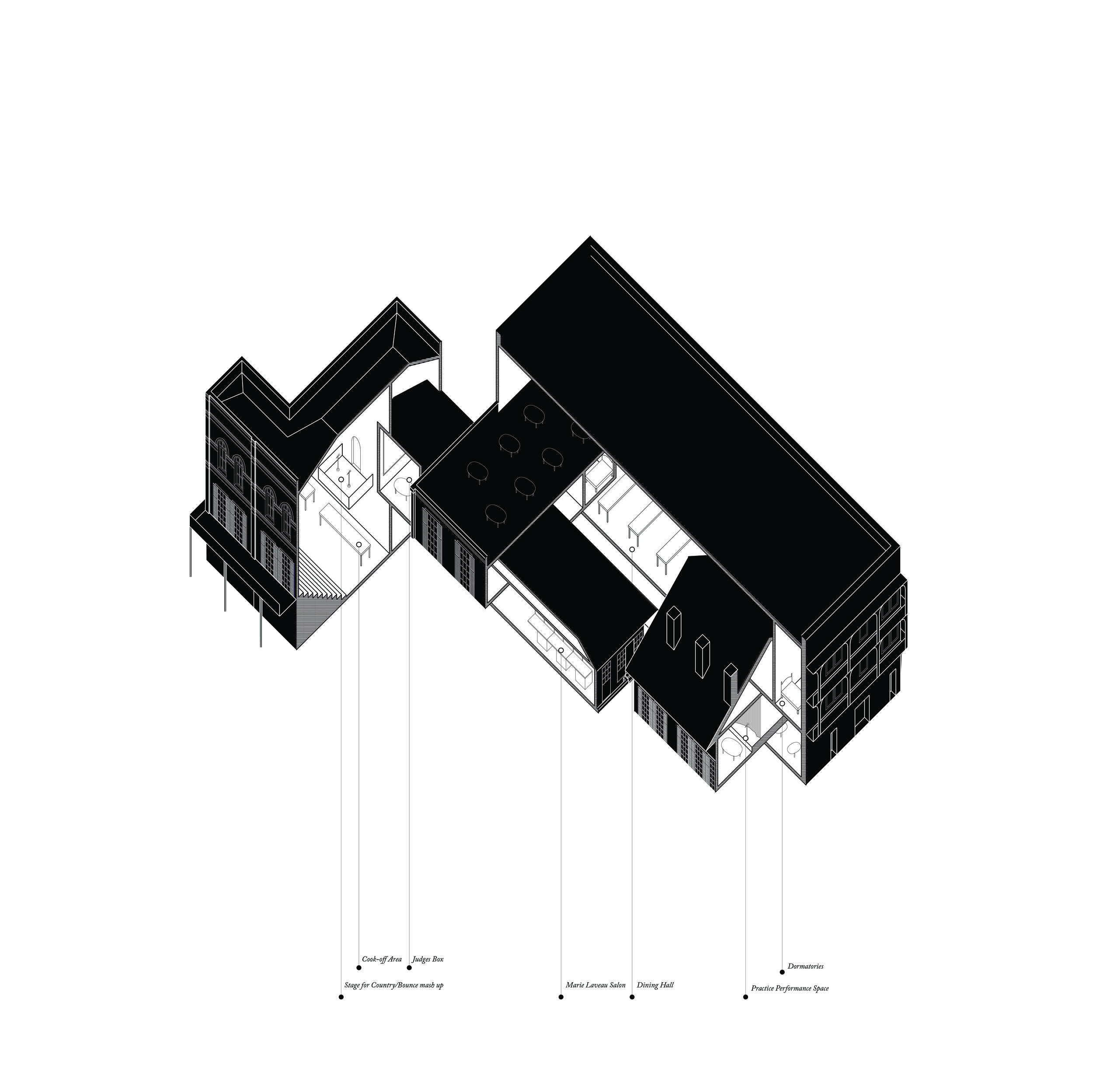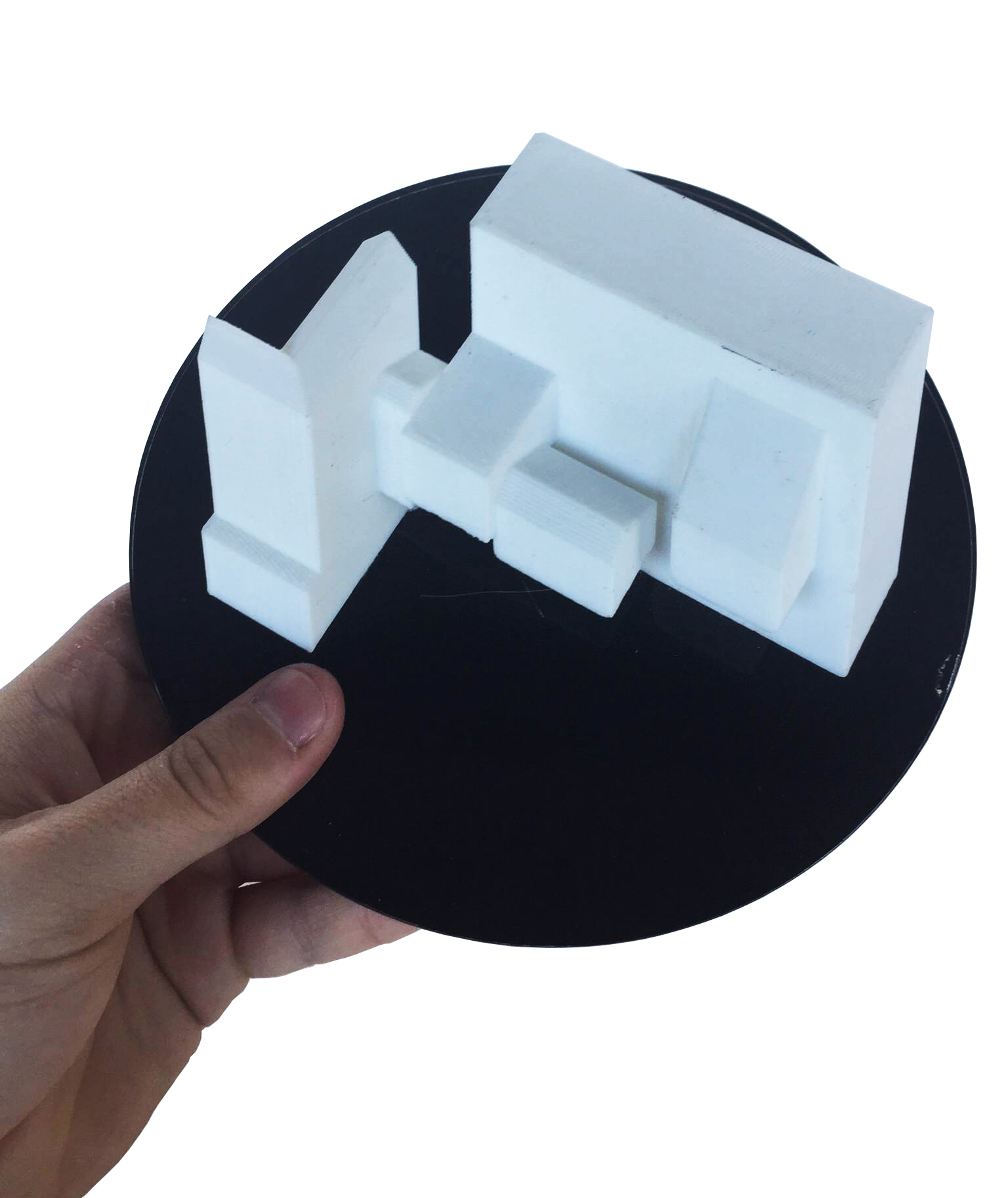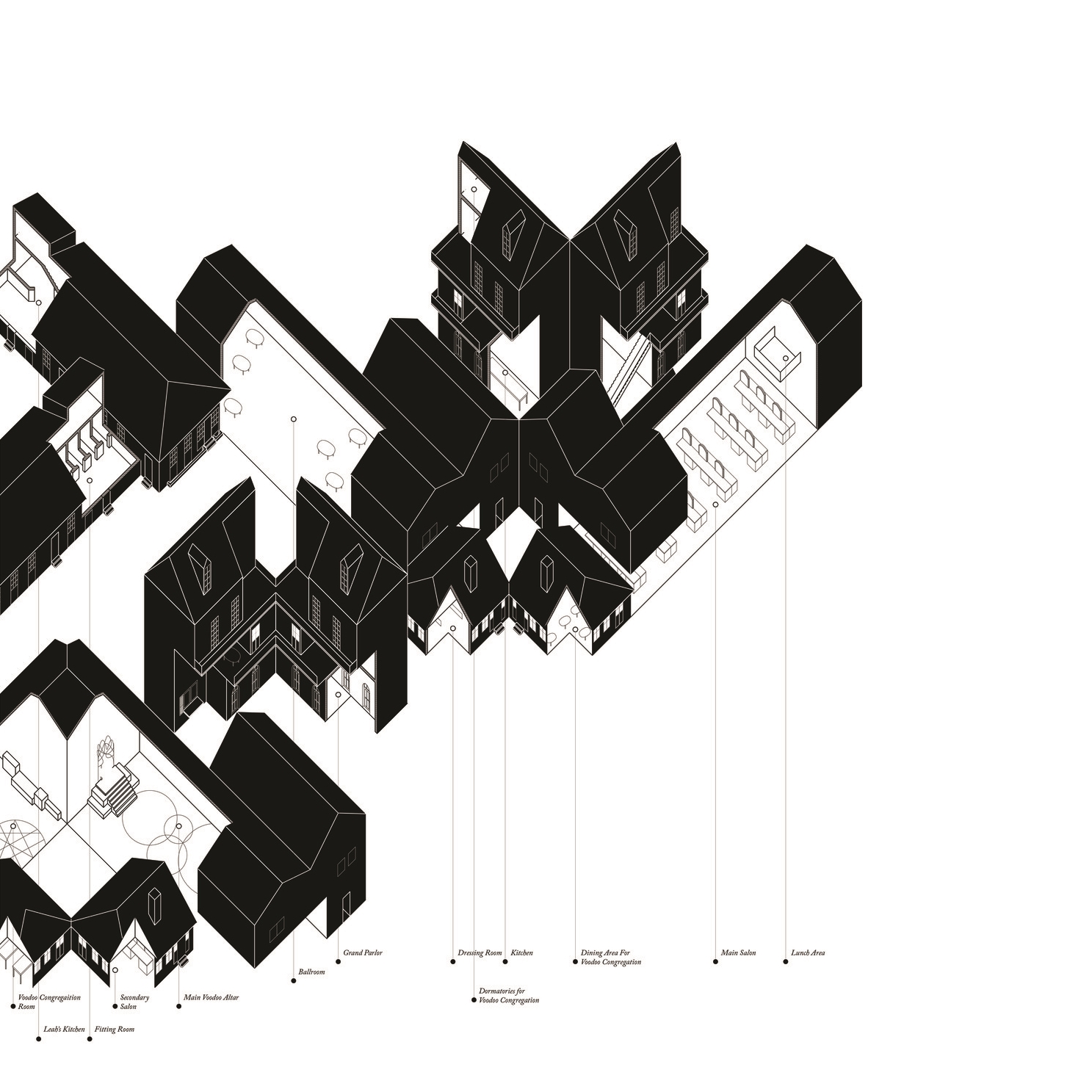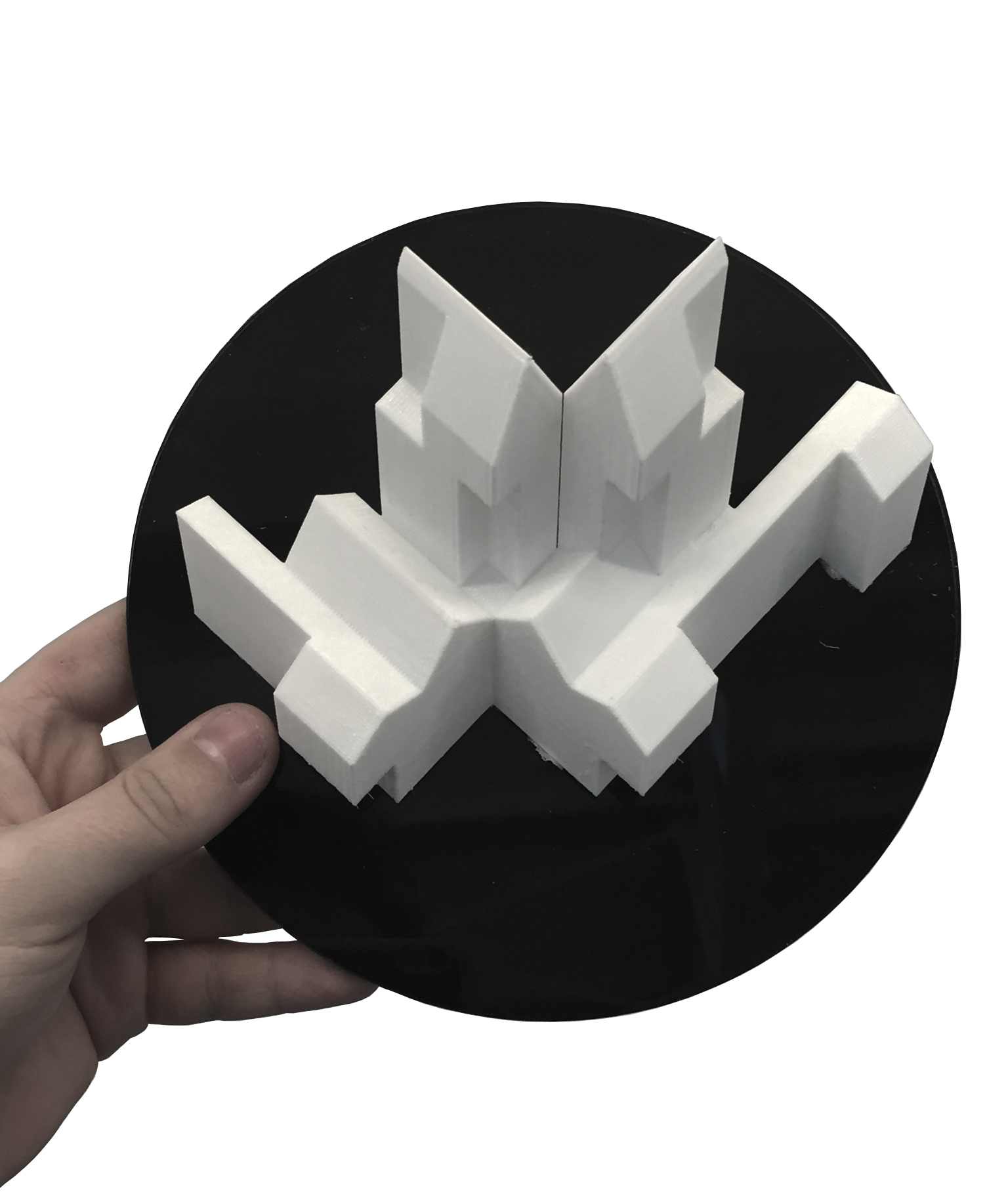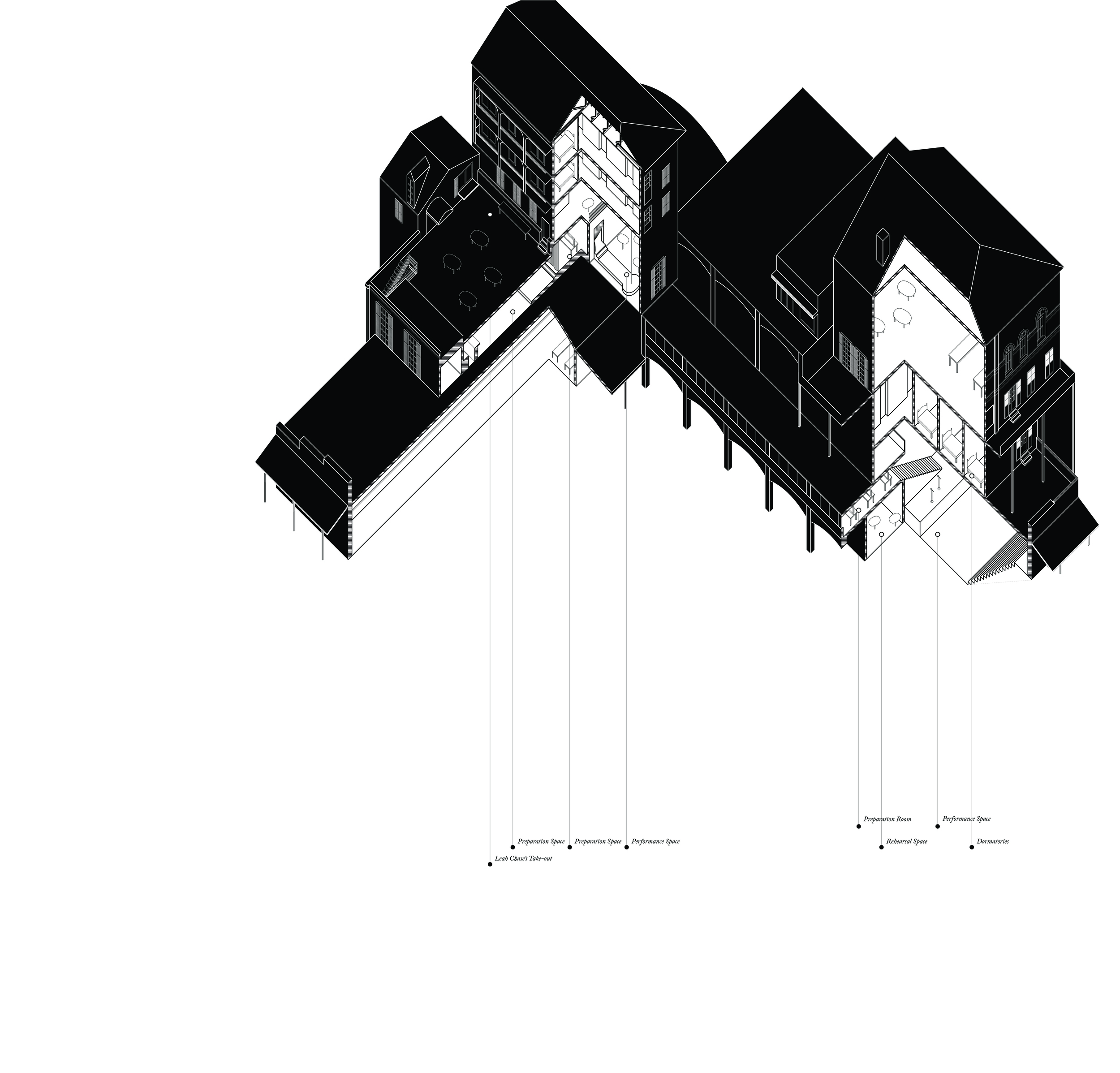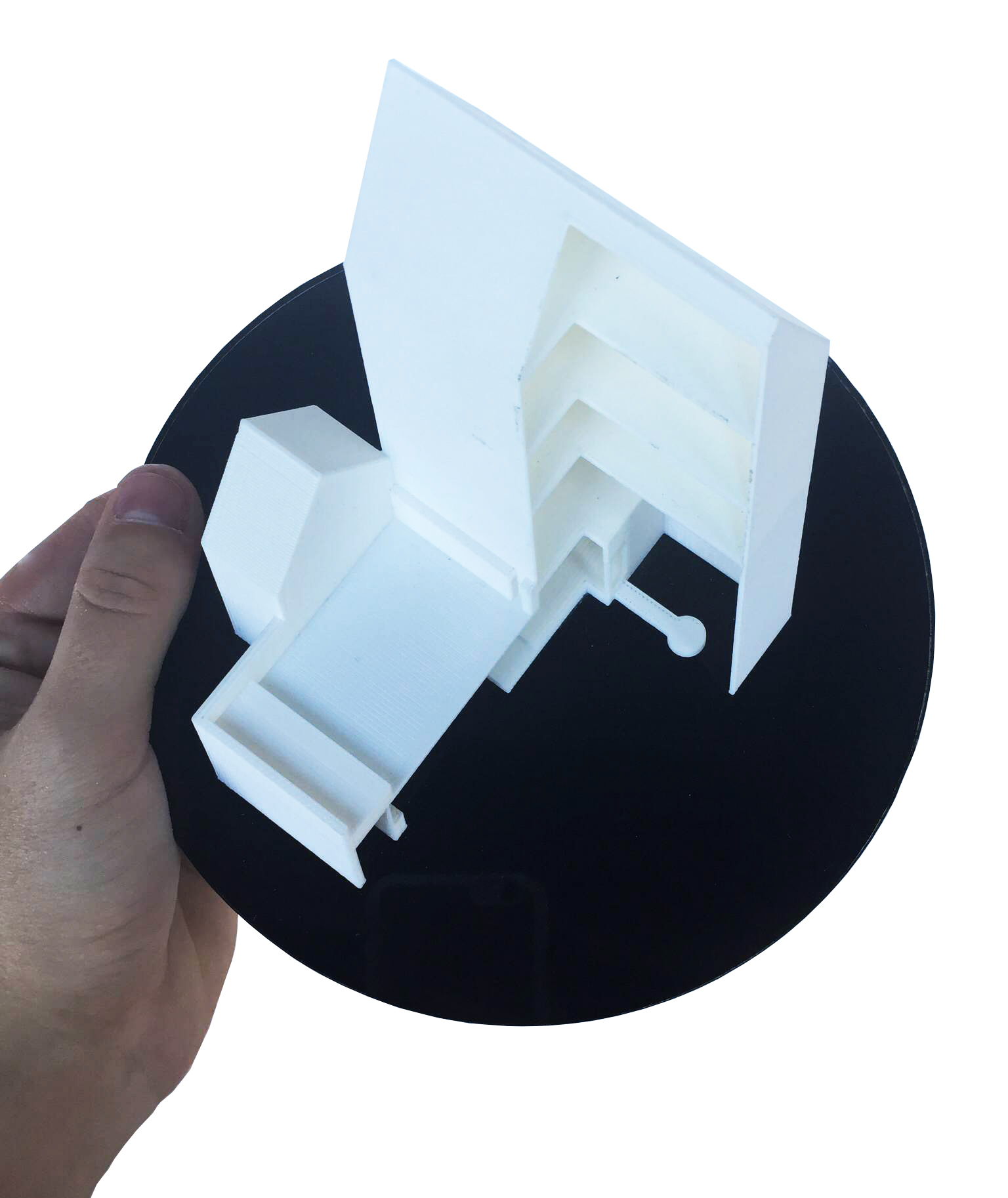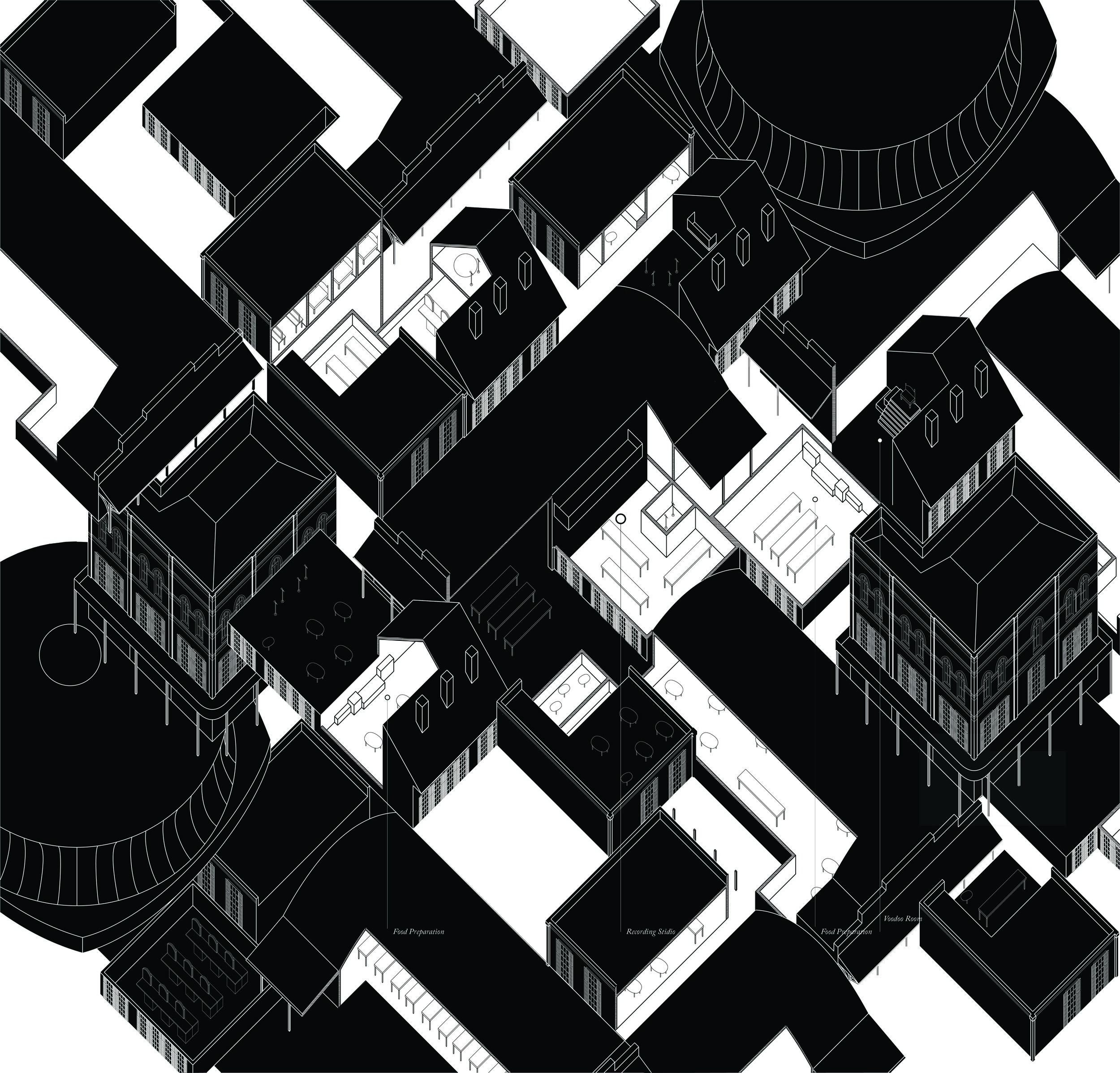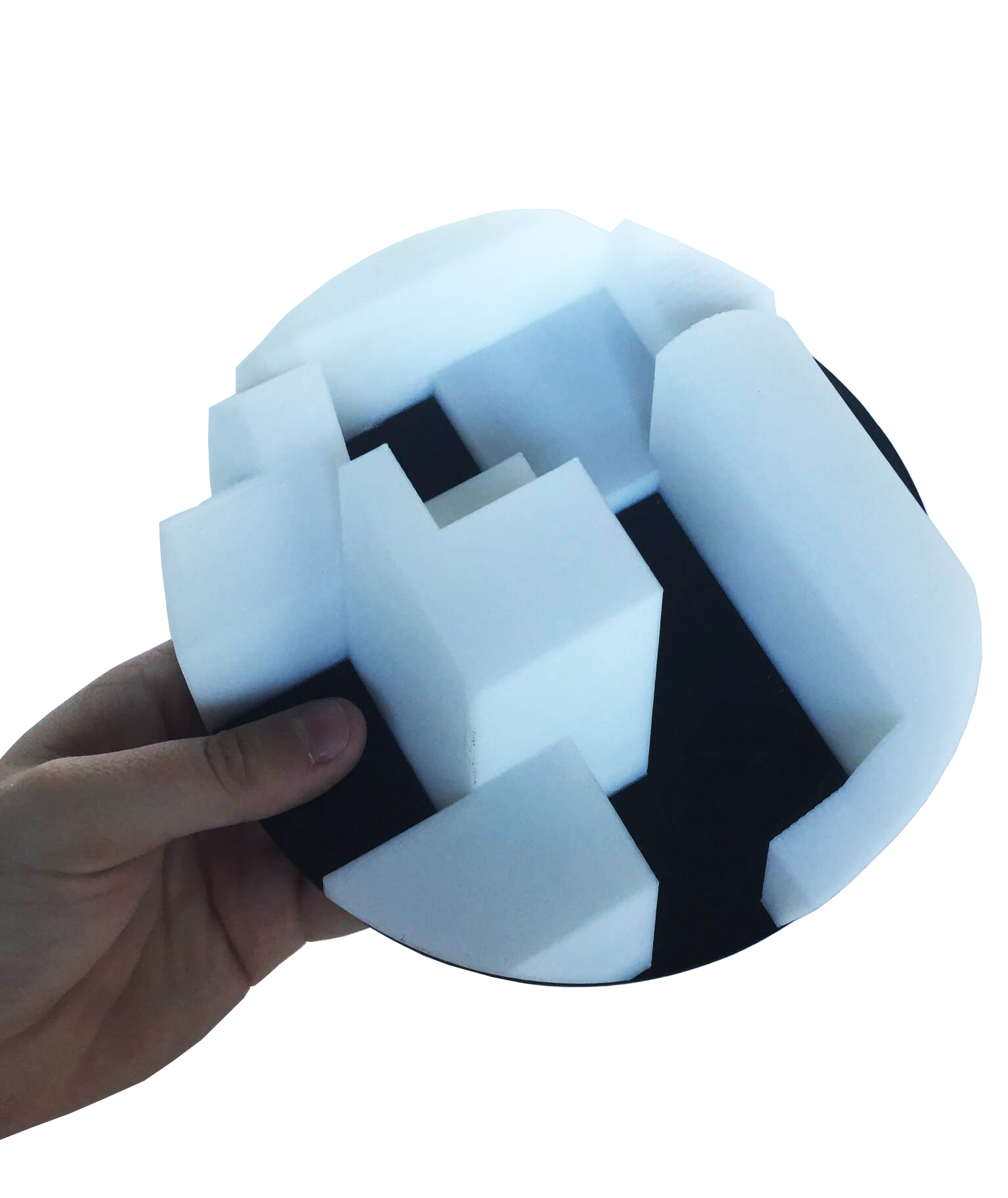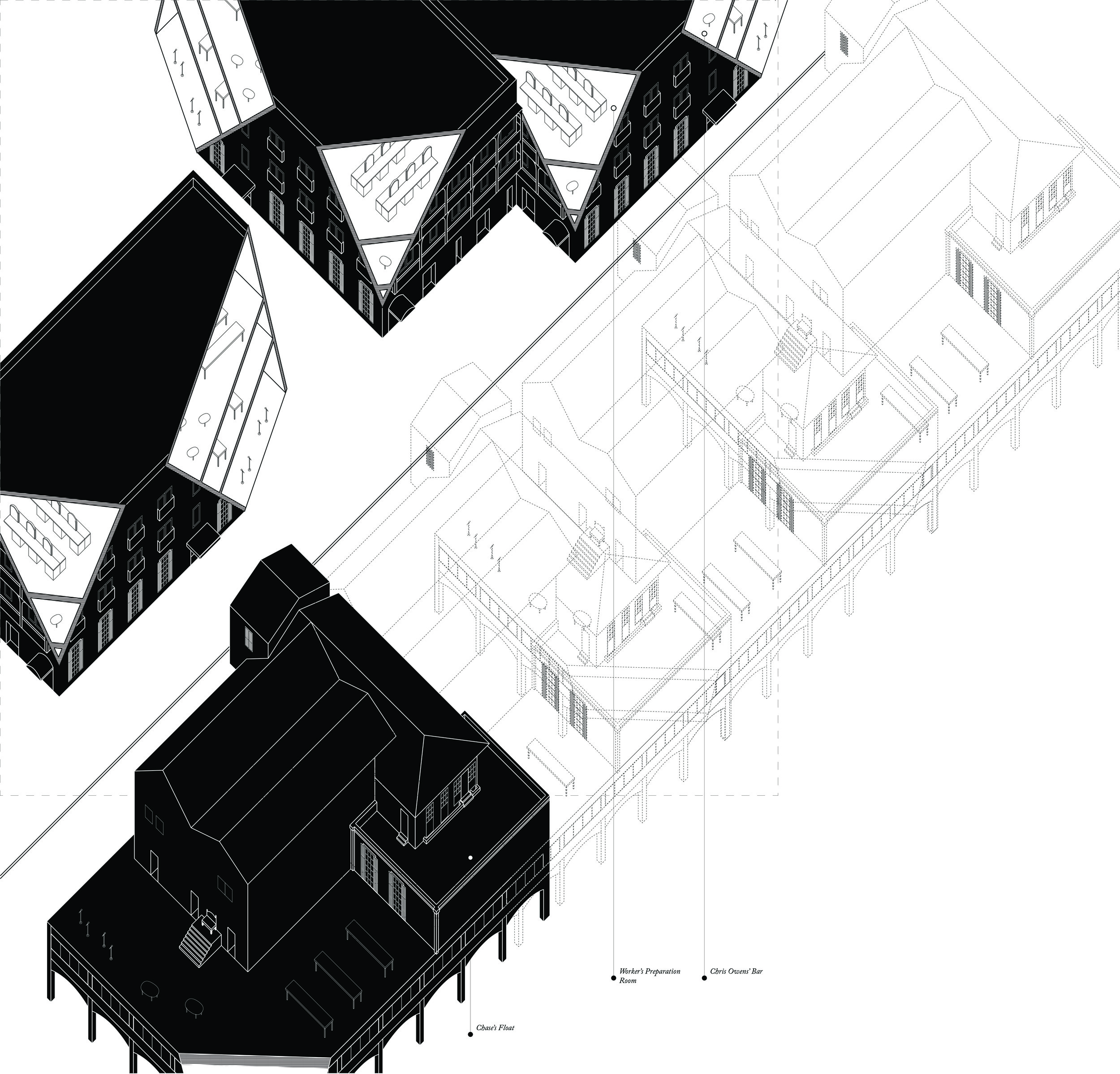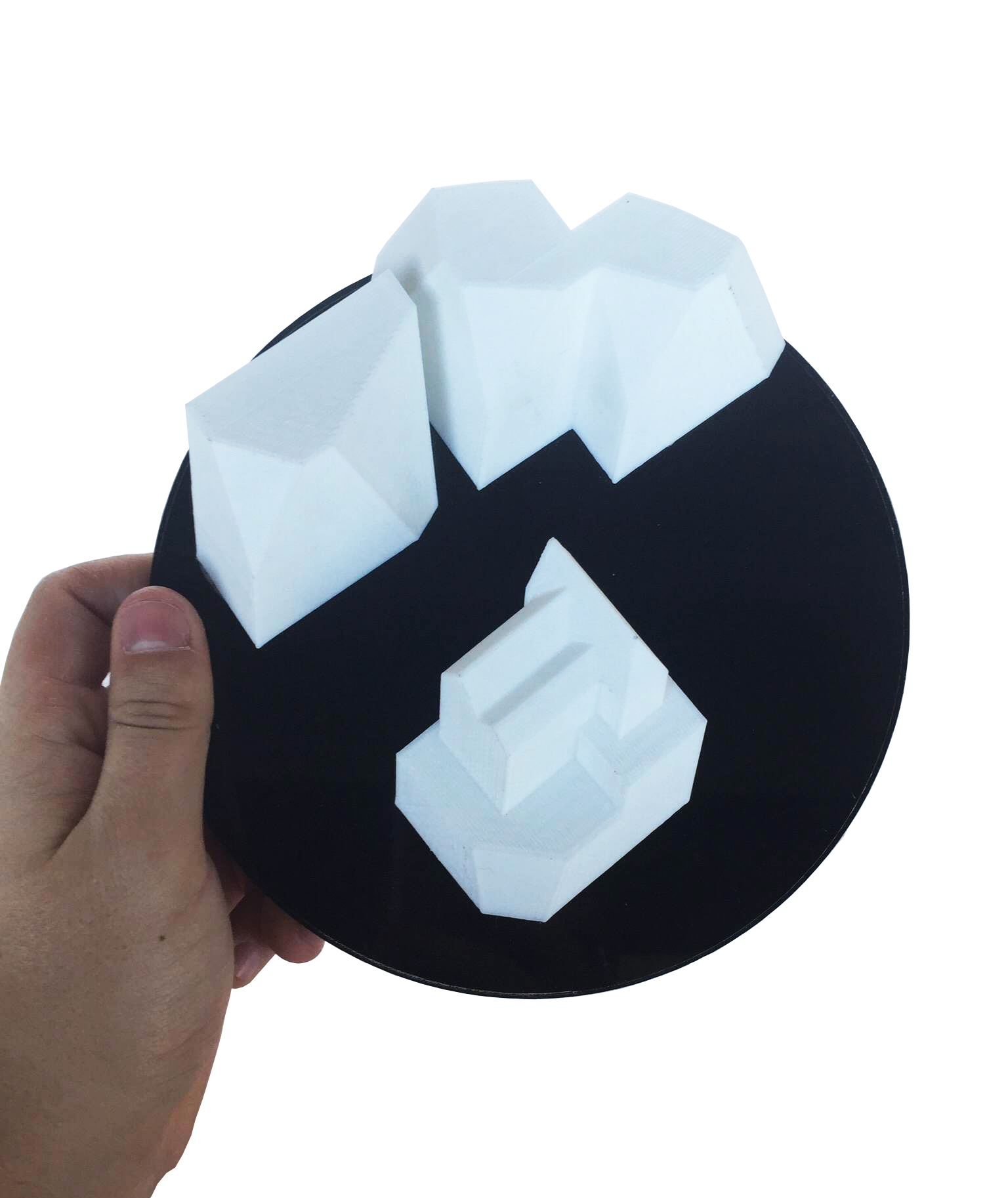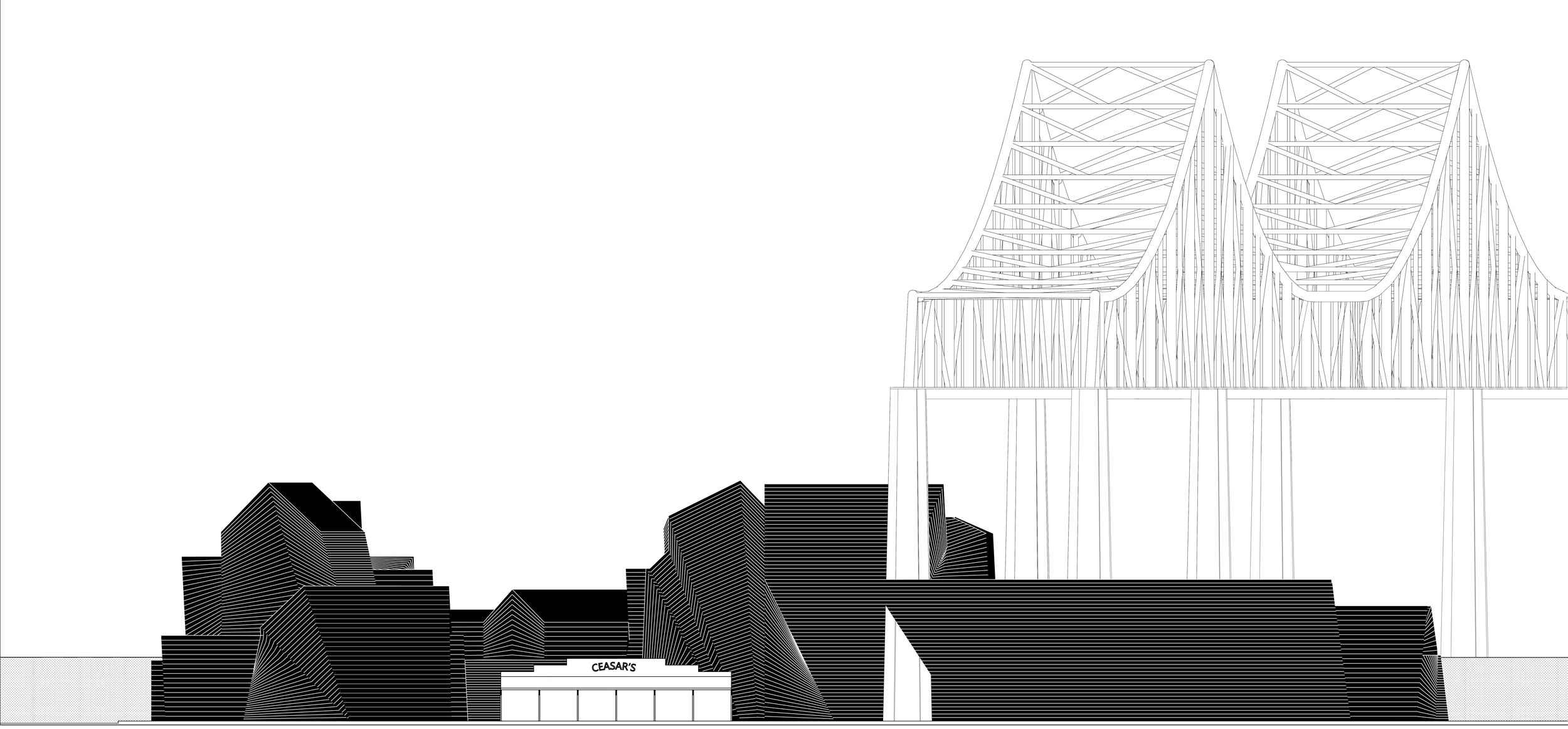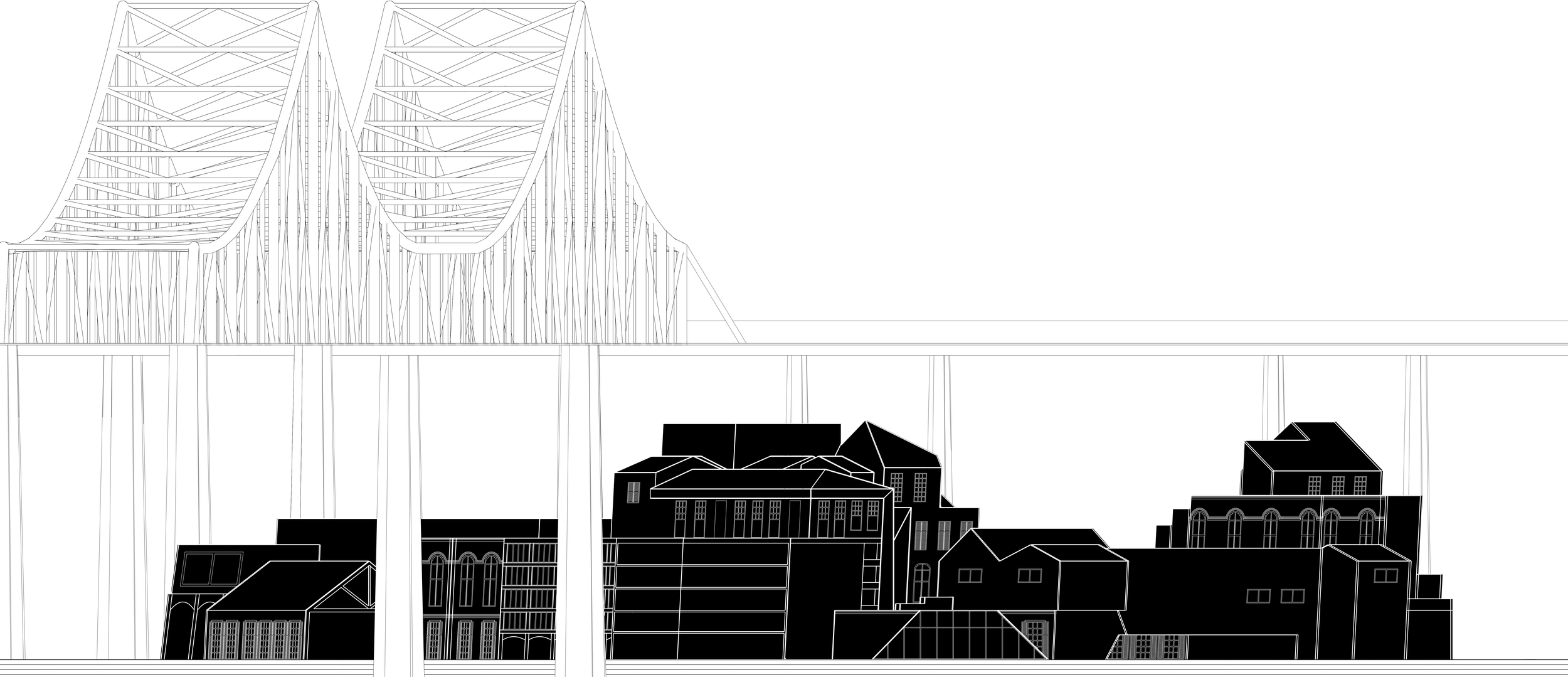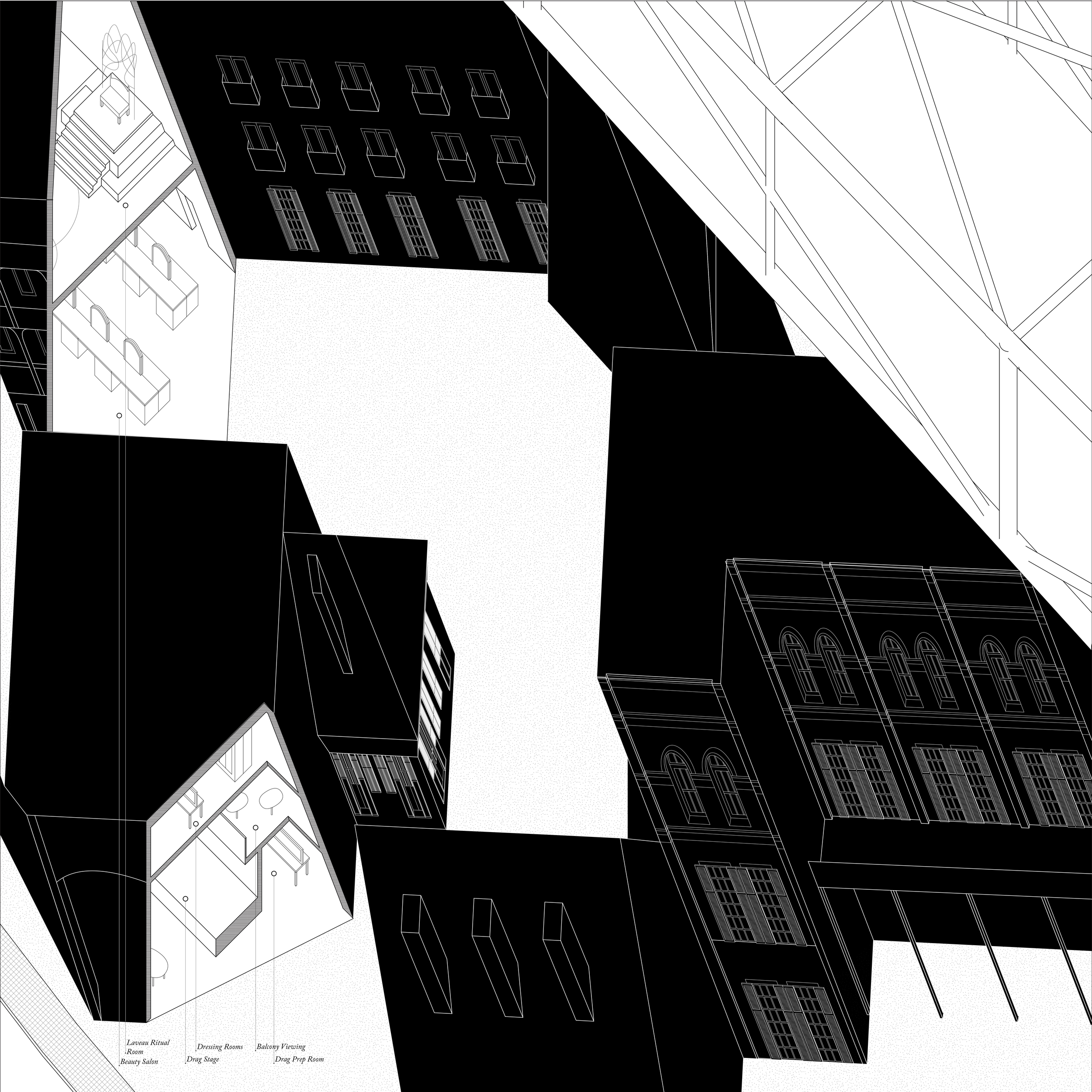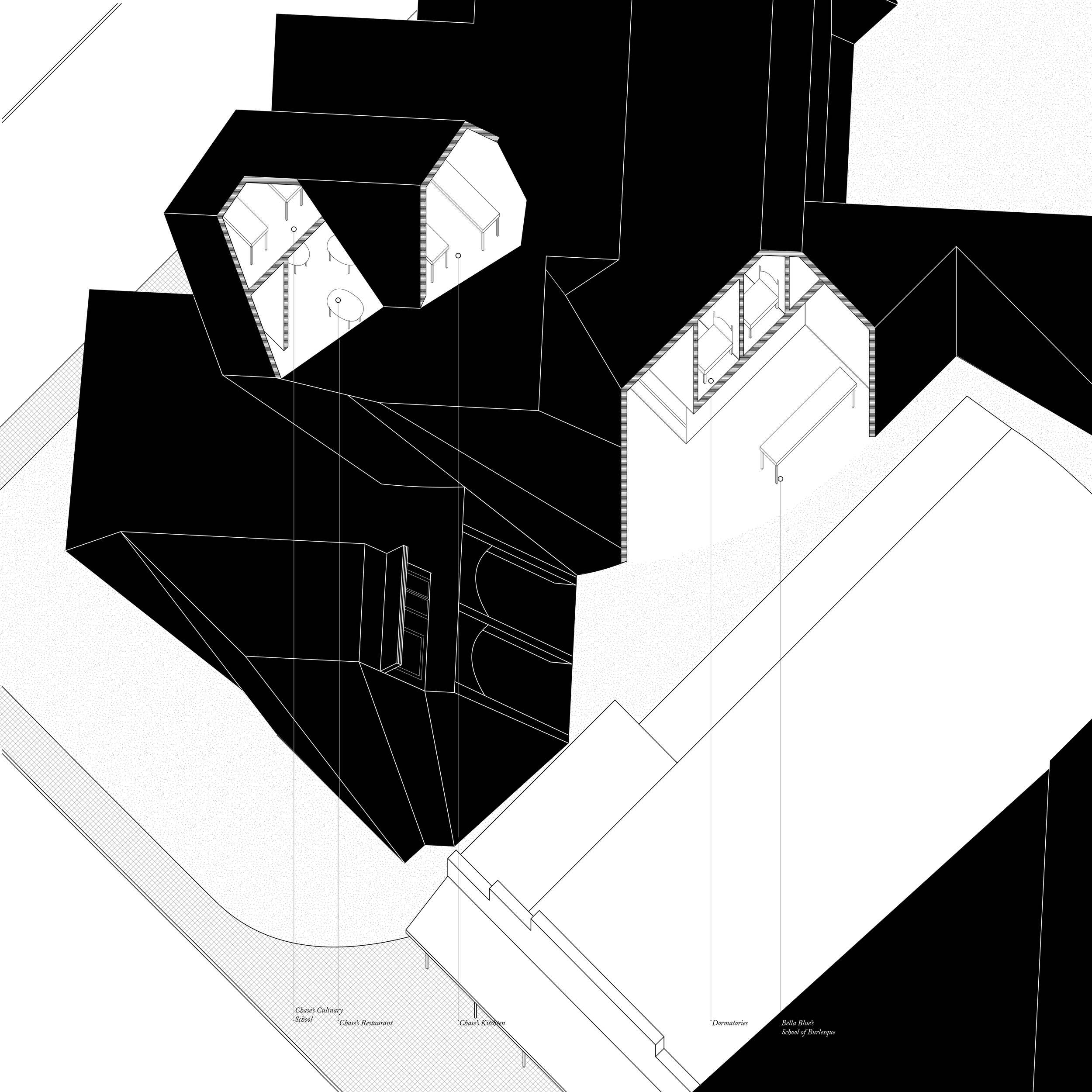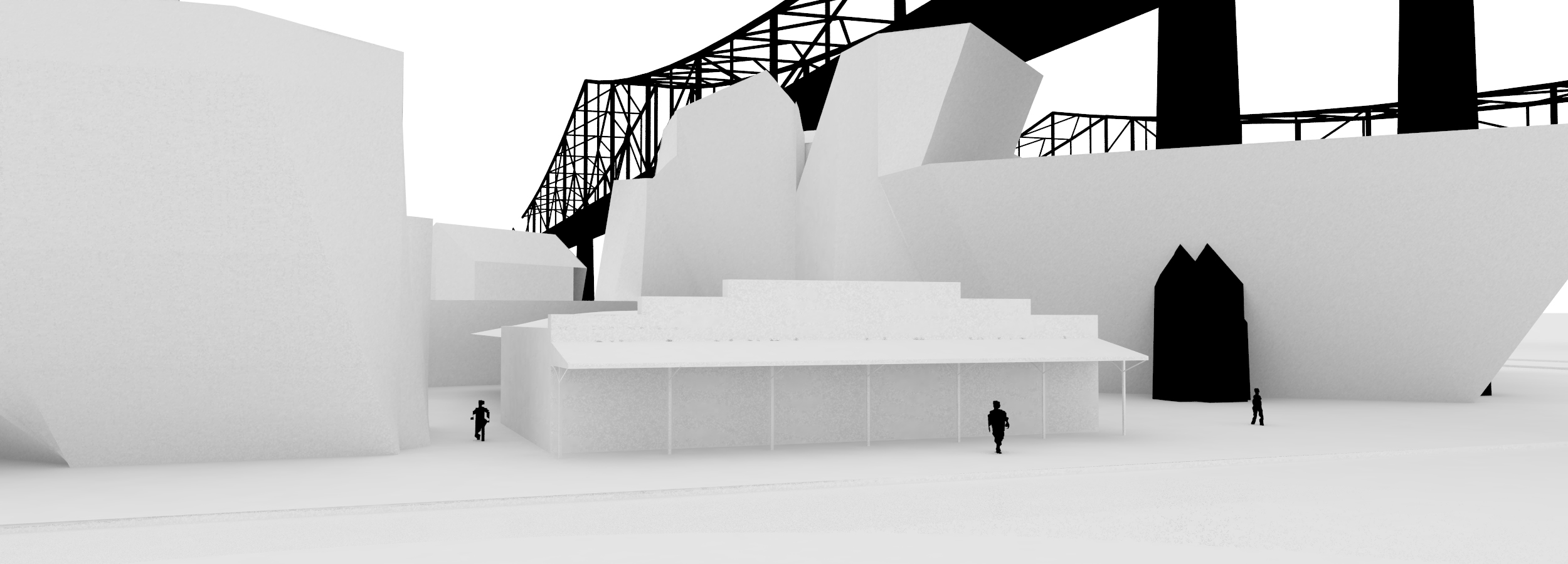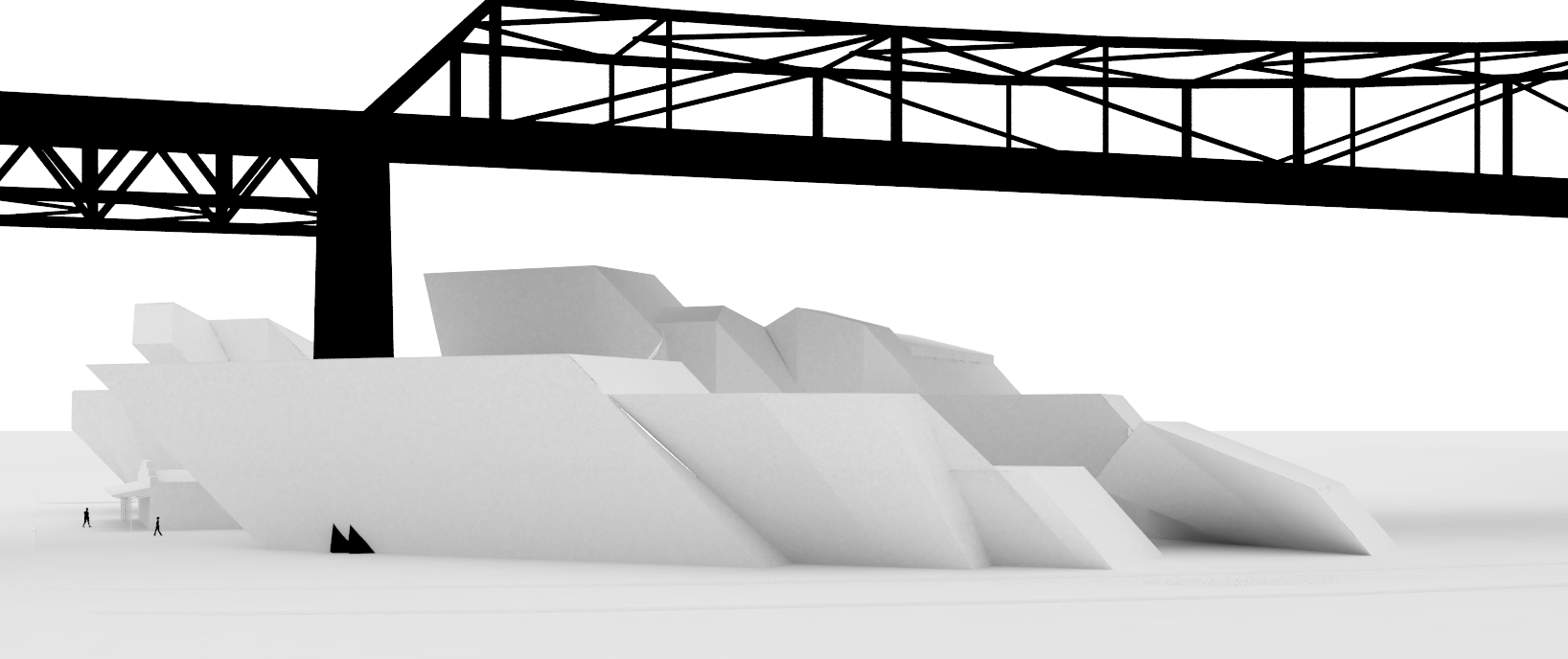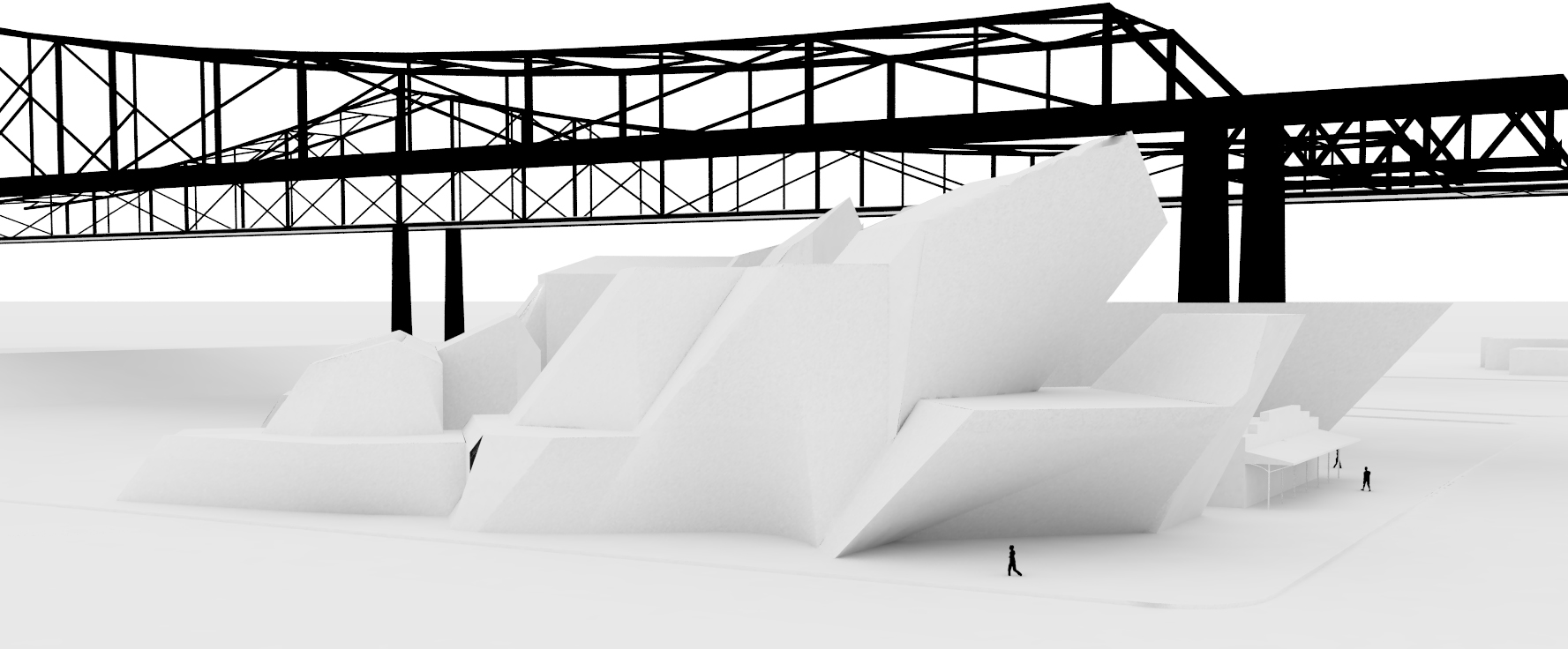Big Freedia's Institute of Iconic Women
Research for this project began with a search for the hidden and unknown icons of New Orleans. Throughout the research, a common underlying theme that was found was the unique "neutral" position of female figures through the history of the New Orleans. Most of history [particularly in New Orleans] is a white heterosexual man's game and doesn't tell the woman's story; women have found their own way of cultural preservation-mostly through a vernacular oral history. This project strives to record that unwritten, celebrated history of the female figure in New Orleans, Louisiana.
Project Details:
Module | Design and Research Studio, Fall 2014
Critic | Jennifer Bonner
Location | New Orleans, Louisiana
Program | Educational Mixed-use
The Queens
Twelve Female Icons were chosen to represent central cultural figures of New Orleans. These women were placed into six groups and paired with a counterpart from a different time period creating six categories of Queens of New Orleans: The Voodoo Queens, The Cuisine Queens, The Bounce Queens, The Drag Queens, The Sadistic Queens and The Burlesque Queens. Each figure was represented by a corresponding building in which they identify with.
Programmatic Narratives
Once the Queens were identified and an architectural language was established, five programmatic narratives were written in order to create a world in which these characters could live in. After the narrative was established, an architectural, axonometric drawing was made in order to represent said narrative. Furthermore, a three-dimensional model was created to represent the drawing. These models were created in the spirit of Peter Eisenman's House X study in which the model would directly relate to the axonometric drawing when looked at from a "top view".
Leah Chase and Susan Spicer’s Cook-off
Infamous party hostess Delphine LaLaurie is throwing a cook-off between New Orleans two most famous chefs: Leah Chase and Susan Spicer. LaLarurie is going all out, each guest is required to arrive two hours prior to the party to have their hair done by popular hair stylist, Marie Laveau and her right hand woman Ava Kay Jones. A mind blowing performance will also take place at the party: a live country/ bounce mash up by local artist Chris Owens and Miss Tee.
Marie Laveau’s Beauty Parlor
It’s an average day at Marie Laveau’s Beauty Parlor. Her good friend Leah Chase comes and brings her lunch which they share during a break. Girlfriends Patsy Vidalia and Mistress Julie arrive at the parlor as they have been invited to a High Society ball and are both hoping to look their best and “pass”.
Big Freedia’s Big Bounce Show
Big Freedia wants to add a new element to her shows. She has been taking classes at the New Orleans School of Burlesque with Head
Mistress Bella Blue. To showcase her new burlesque skills, she has hired Delphine LaLaurie to throw a debut party.
Ms. Tee Signs Freedia
Ms. Tee has been asked by her label to convince new and upcoming artist Big Freedia to sign to Cash Money Records. She doesn't want to mess things up so she hires Voodoo Priestess Ava Kay Jones to perform ritual in the space where Tee and Freedia are meeting and also hires local chef Susan Spicer to create a perfect meal for the two of them to share.
The Southern Decadance Parade
For her work in basic civil and human rights, Leah Chase has been named Grand Marshall of the Southern Decadence Parade. On her float she has chosen have Ava Kay Jones a local Voodoo Priestess as she is quite superstitious. In front of the float will be Miss Tee, a local bounce artist and the first woman signed to Cash Money Records (a personal favorite of Leah’s). The Float is set to stop in front of Chris Owen’s Bar and Balcony where they will be greeted by performances by local drag queens Patsy Vidalia and Katey Red.
Site Strategy
The site chosen for this project is adjacent to Club Caeser's, underneath the Crescent City Connection on the opposite side of the Mississippi River of down town New Orleans. The bridge continues past the site so you have to look hard to find it. To get to the building you have to reach the end of the bridge and backtrack towards the water. Under the bridge- it's a space you're not really supposed to occupy. The world goes on above it without too much consideration; much like women's history- important but not directly recognized. This location is already where Big Freedia and other Bounce personalities perform. It's a place of celebration, safe to dance and listen to crude, uniquely New Orleans music. Similarly, the world goes on without them.
The overall top view of the building is created in the same Eisenman idea of one point- top view perspective. It is formally organized as a "mashup" of all of the Female Icon's associated buildings. The strategy is successful as the the first view a person gets of the building is from the bridge in a top-view perspective.
Worms-Eye Studies
Once the program and site strategy were set, a formal study was done in order to determine the architectural elements not seen in the top-view. The logical study to undertake for this is a worms-eye study as it explores the counter-side of the top-view. It is also worth noting that the worms-eye drawing is often underutilized, misunderstood and outcast; much like the position of female figures in history.
Extremities
This study explores the absolute extreme boundaries in which the project can work within. Using the Eisenmann model of axonometric view points, a vertical projection is moved to the ground to create spatial boundaries for population.
Contractions
This study works in opposition to the previous “extremities” study. The contractions study takes the basic size and shape of program elements required for the building and contracts the form around it until it reaches the Eisenmann-inspired formwork.
Cantilever
This study focuses on overhangs and cantilevers. Using the iterative Eisenmann drawing as a base point, each space is applied with the 2/3 to 1/3 overhang rule. After the application for each wall, the space is drawn based on the newly created walls. This process reveals a drawing similar to the Extremities study.
Poche and Decay
This study explores curves and more organic, non-linear paths that make their way through the space created from the Eisenmann Study. The curves are meant to mimic the meanders and flow of the Mississippi River, which the city of New Orleans owes its life to
Final Worms-Eye View
This drawing shows a worms-eye view of the final form of the space. The form is generated by the three preceding studies. Hints of program and other architectural elements are inculded in the drawing, though the final form is slightly altered from the work shown.
Final Deliverables
Once the worms-eye study and the programmatic mash-up studies were completed and combined, the building was complete. The following drawings and model are meant to communicate how the final building would be perceived and experienced by the viewer.
Final Elevations
Final Axonometric Views
Final Model
Renderings
